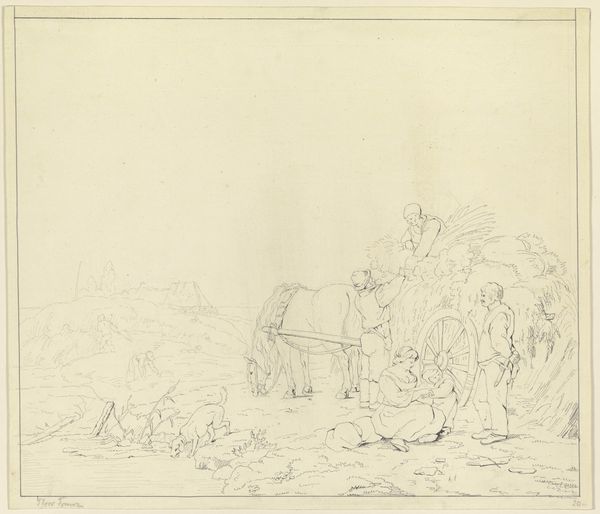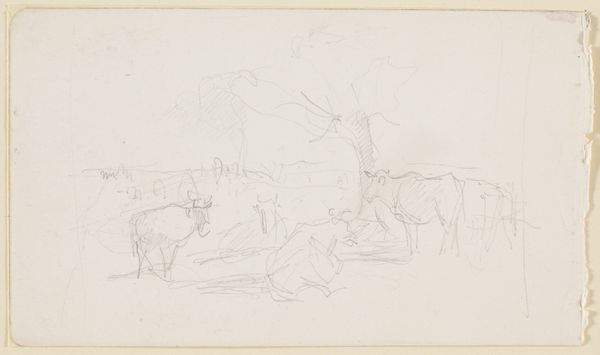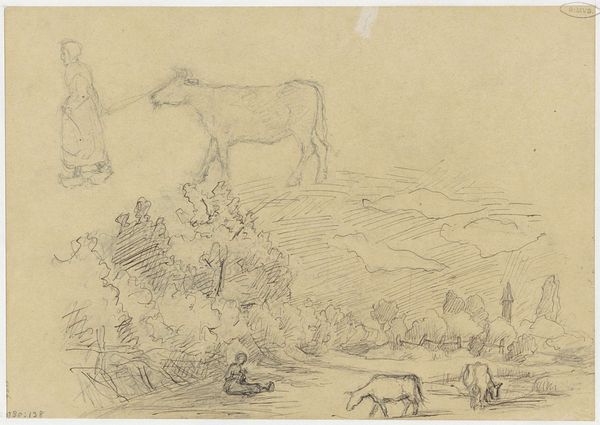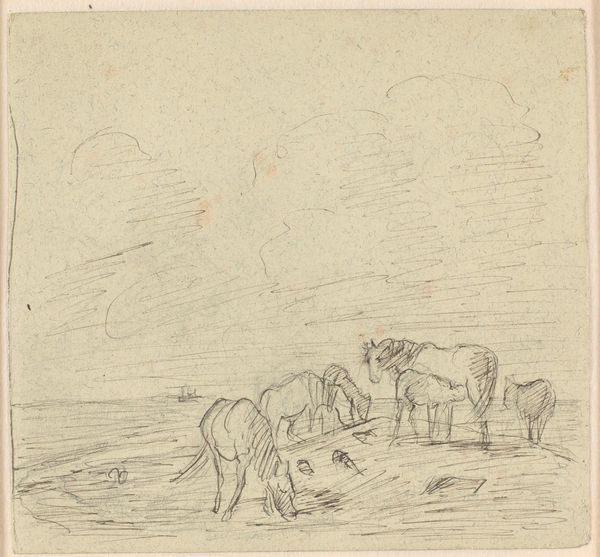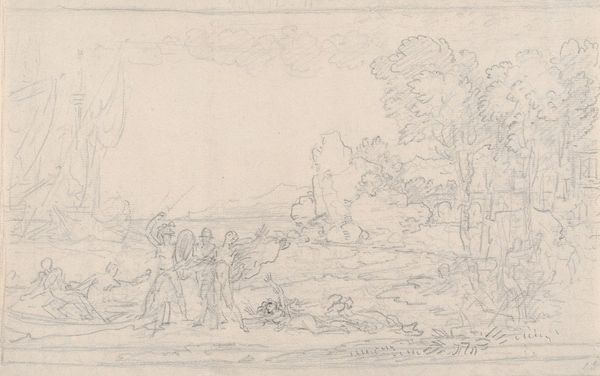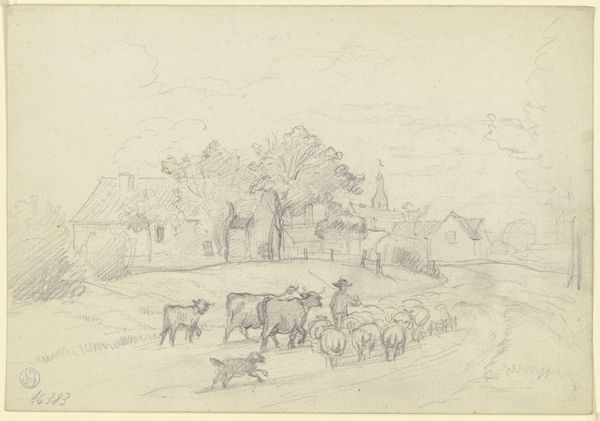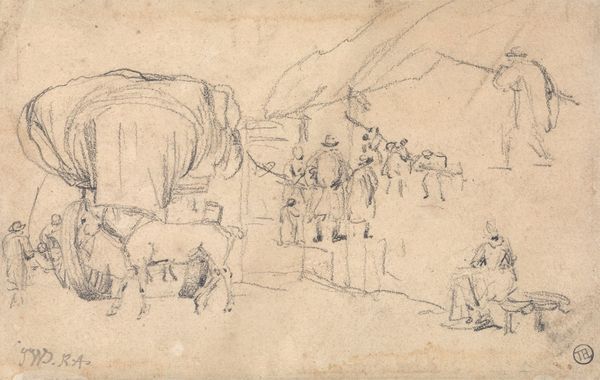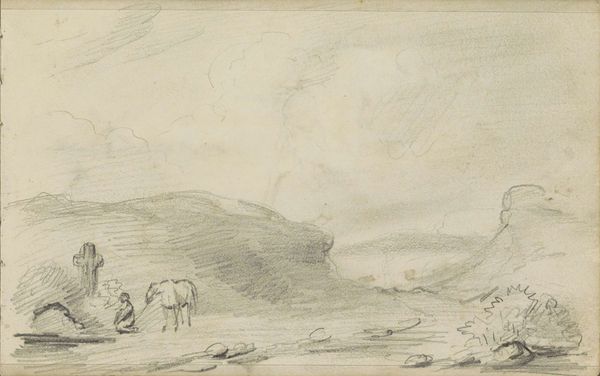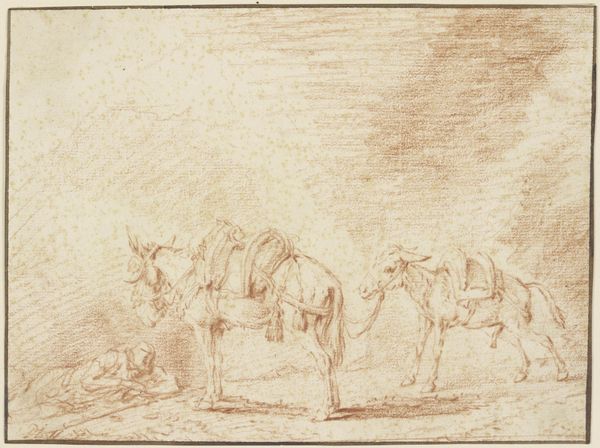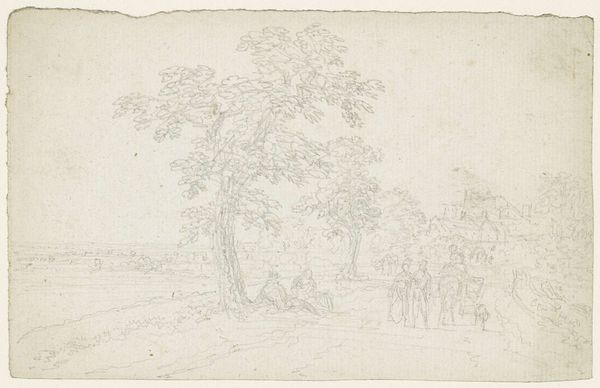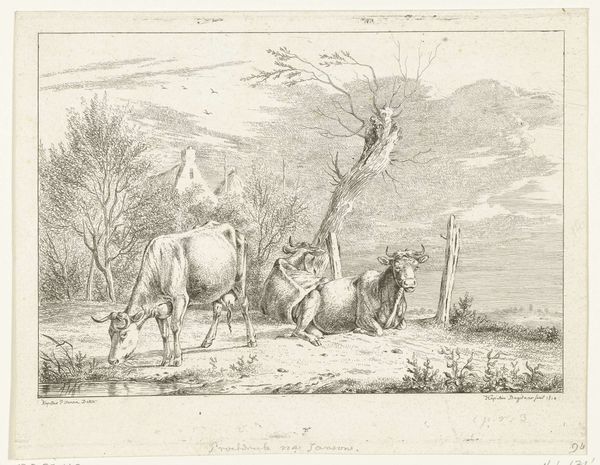
drawing, pencil, graphite
#
drawing
#
landscape
#
pencil
#
graphite
Dimensions: height 145 mm, width 196 mm
Copyright: Rijks Museum: Open Domain
Curator: This is “Schets van een Ossendrift,” or “Sketch of a Cattle Drive,” created sometime between 1752 and 1819 by Jurriaan Andriessen. It's a drawing done in pencil and graphite, here in the Rijksmuseum. Editor: There's something incredibly serene about this, despite the subject. The pale graphite gives it an almost ethereal quality, like a half-remembered dream of rural life. Curator: It’s intriguing how a seemingly simple scene, cattle being herded, resonates with broader cultural narratives of the time. Andriessen, like many landscape artists, wasn’t merely depicting scenery. He was participating in a conversation about the ideal landscape, often tied to notions of national identity. Editor: Do you see any particular visual markers of Dutch identity, or is it more generalized? It's spare. Almost elemental. Curator: More generalized, I think. But consider the historical context. The late 18th century was a time of political and social upheaval. Idealized landscapes, even as sketches, served as visual anchors, providing a sense of stability and continuity during times of uncertainty. The cows could represent rural economic power in a nation dependent on its agrarian base. Editor: So the art provides a kind of silent propaganda? The gentle scene suggests safety in agrarian values, but avoids actually addressing socioeconomic troubles that likely existed at the time for those outside the wealthy class? Curator: Not necessarily propaganda, but it presents a specific, arguably optimistic, point of view on society. I agree on the lack of labor pains, but propaganda is always too intentional, and artists can't really have a full grasp on how future peoples will read their signs and symbols. Now, tell me, what visual elements resonate with you most? Editor: The stark lines against such light values. Look how he etches just enough to get you to recognize those bovine shapes. It’s incomplete but utterly descriptive. It reflects our habit as viewers to assemble complete visions from minimal stimuli. It touches something deep in human symbol interpretation. Curator: A keen observation. It really reveals how preliminary drawings can highlight the bare essence of perception and symbolic recognition, stripped of ornate detail. Editor: Looking at this piece again, I think I am going to ruminate about my own idealized visions, my symbolic associations that lead to my happiness. This piece helps highlight that power in artistic expression. Thank you for guiding my perception! Curator: My pleasure, indeed! It has been a refreshing reexamination for myself, too. Thanks.
Comments
No comments
Be the first to comment and join the conversation on the ultimate creative platform.
